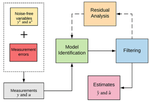About Me
I am currently a PhD candidate at CSE Dept, Purdue Unviersity, advised by Prof. Jean Honorio.
Before joining Purdue University, I was an MS (Research) scholar under the guidance of Prof. Balaraman Ravindran and Prof. Shankar Narasimhan at CSE department, IIT Madras. My MS work was focused on spectral hypergraph theory using tensor representation of hypergraphs.
I finished my Dual Degree (B.Tech + M.Tech) in Electrical Engineering from IIT Madras in 2016 where I collaborated with Prof. Arun K. Tangirala, Prof. Shankar Narasimhan for my final year research project. I am also fortunate for the opportunity to closely work with Prof. Raghunathan Rengaswamy, Prof. Manikandan Narayanan, and Prof. Srinivasan Parthasarathy.
Interests
- Theoretical Machine Learning
- Learning on Graphs / Hypergraphs
- System Identification
Education
-
PhD in Computer Science, 2021-Present
Purdue University
-
MS (Research) in Computer Science, 2018-2021
Indian Institute of Technology Madras
-
B.Tech and M.Tech in Electrical Engg., 2011-16
Indian Institute of Technology Madras






